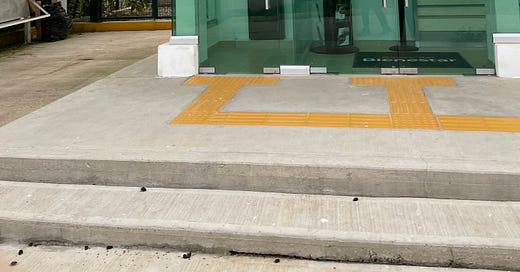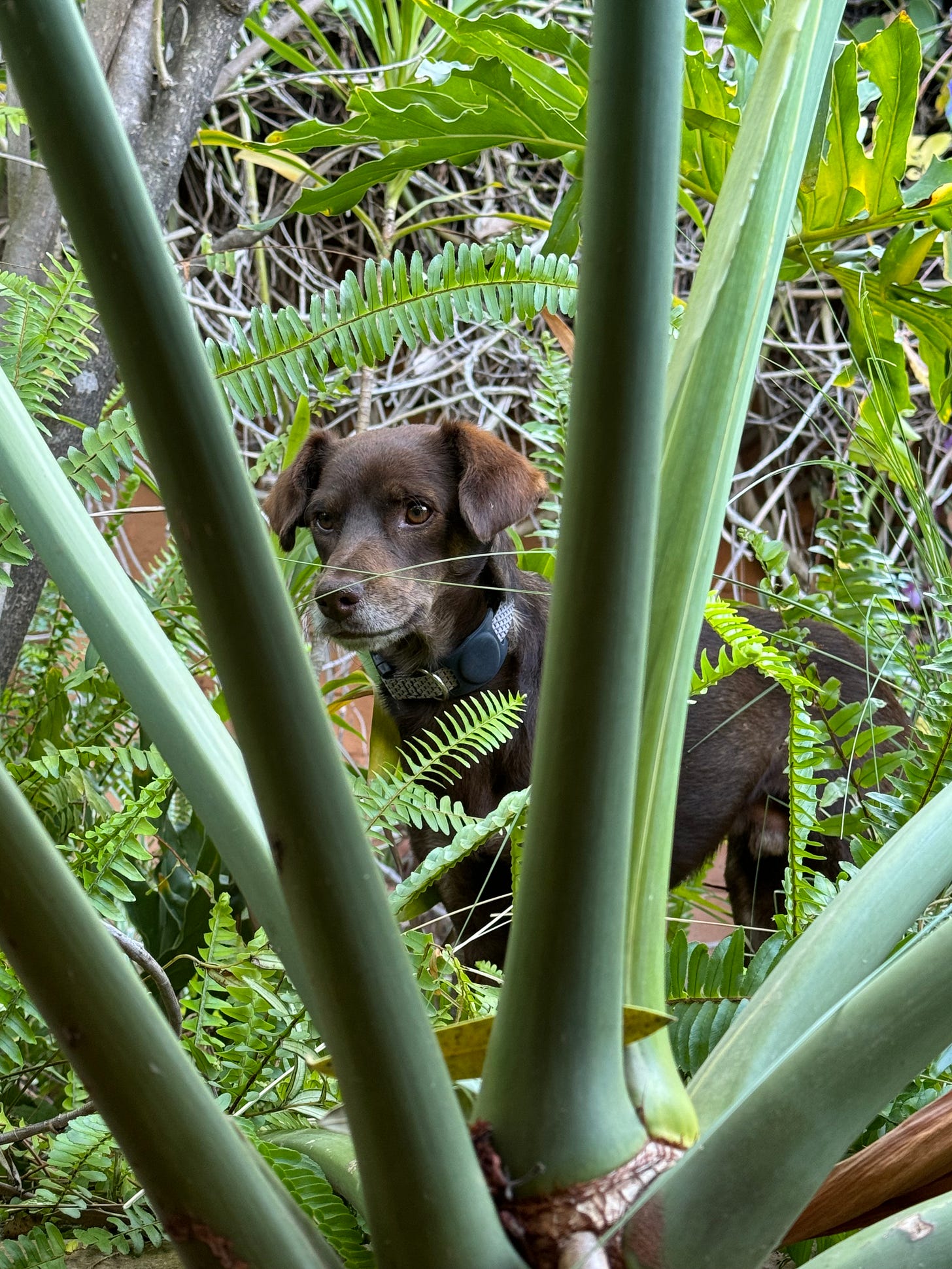The Hunt For Efectivo
Efectivo—cash—rules the Mexican economy. It's also shockingly hard to get.
No routine chore has ruled our lives more than trying to get cash.
You’ve followed along with our efforts to get our car registered, and our adventures with the gestor, Señor Placas. If you’re a paid subscriber you heard about how our very reliable builders took a nap in one of our bedrooms. But nothing has been more casually vexing than trying to get cash.
Cash—efectivo—is necessary for almost all transactions. If you’re paying for a meal in a restaurant in a village, you’ll need cash. If you’ve hired someone to do any kind of work at your house, including an electrician or a plumber: cash. If you’re buying art, furniture, ceramics, vegetables, coffee, or almost anything at all where the transaction isn’t happening in a brick-and-mortar store owned by a corporation, or in a business that’s tourist-facing, you’re going to be required to pay in cash. So, considering how absolutely essential it is to have cash on hand, it’s incredible how difficult it is to get in Mexico.
Not too long before our trip to the United States we sat down to figure out how much cash we’d need to preemptively pay Edgar for the time we’d be away (and to give him his required-by-law Christmas bonus) as well as what we’d need for Martín, the carpenter we’d hired to redo our kitchen cabinets and closets, and Lalo, the ironworker who has been turning one of our balconies into a glass-enclosed office for Andrea. All of these bills coming due at the same time was coincidence, and we realized with dismay the grand total was 90 thousand pesos, which at going exchange rates is about 5 thousand dollars.
It was nerve-wracking. While I imagine people who run businesses which take cash might not think much about having that much money around, for us it was a lot of cash to have on hand, and in Mexico that’s at least a little risky.
When we were still in the process of moving and trying to figure out how what the economy is like in Mexico, a friend from Mexico City told us that an attorney in the city might make around 12 thousand dollars a year. So in Oaxaca, which has some of the greatest income disparity in the entire country, five thousand dollars isn’t just a lot of money, it represents what someone might earn in an entire year. And, when we first moved in, Penny and Victor told us that they’d gone to great pains not to let anyone in the village know that they were moving out or that they’d sold the house, both to avoid chisme and because a great many Mexicans are unbanked, preferring/needing to do all of their transactions in cash. This means that they keep extra cash at home and when people move the incidence of break-ins and theft rises, as the chaos of a move (and all of the strangers entering and exiting a home in the process) provides a window of opportunity.
With all of this in mind we did two things: the first was that we bought a sturdy, fireproof safe which Edgar and I firmly anchored in concrete in a discreet location. The second was that we started going, daily, to every reputable ATM we could find.
Mexican Banking
Because we don’t have access to a Mexican bank account yet we can only get cash by either physically bringing it into the country when we fly in (which feels like an awful idea) or using our American debit cards at a Mexican ATM.
It’s not that we haven’t tried to be banked here, and technically we do have an account. But Mexico, a country we love, is not known for its well-functioning institutions, and this also applies to Mexican banks.
There are a thousand things that can trip you up when it comes to Mexican banks. Not having the right combination of paperwork (an electric bill; proof of residence; tax identification card; passport; etc.). Not making the right kind of appointment. Inputting a password incorrectly. Refreshing a webpage at the wrong time. All of these things can result in either being turned away or immediately locked out of an account.
After a grand total of six extremely inconvenient visits to the bank, which is located in the city in an extremely busy part of the tourist-facing Centro neighborhood, against all odds Andrea was able to get her account created weeks before Christmas. It proved to be so difficult that the banker, who Andrea had seen on her previous visits, did a little cheer when her system approved the creation. But, sadly, despite the momentary public celebration, the bank still hasn’t gotten around to actually approving our ability to deposit any money into the account and Penny (who helped Andrea with her first appointment and is the ‘sponsor’ on the account) received yet another call today asking her to tell Andrea to visit the branch…again.
The Great ATM Hunt
ATMs pose a problem for everyone, but this is particularly true for expats. While Oaxacans are largely concerned with whether an ATM is conveniently located and has enough cash in it, expats also need to worry about currency conversion rates, ATM fees, and whether the ATM is even giving you correct information.
Everyone has their favorite ATM, and almost no one has one that’s local. When we first moved to our village, San Agustín Etla, Penny and Victor told us that an outpost of a local bank had been built in town. It was a big deal and the fulfillment of a promise the government made to make it easier to conduct banking locally. But, of course, for months the brand new, glass-fronted bank had no cash in it, just a very friendly security guard who spent their day looking at their phone and telling people sorry, still closed.
Common problems are:
ATMs Lack Cash: This one we experience every single time we try to withdraw money. ATMs simply run out of cash. While perhaps this is because there’s such a huge demand for cash that the banks simply can’t keep up, the vibe here is more one of ill-preparedness. Either the cash didn’t arrive at the bank on time or someone didn’t bother to refill the machines. The ATM also won’t tell you when it’s low on cash, it’ll just cancel the transaction without telling you why.
A Lack Of Information: ATMs not giving you enough information is maybe the worst problem of all. A Mexican ATM won’t always tell you what the maximum withdrawal limit is for the machine, and if you try to take out too much it will just cancel the transaction without telling you why. It’s basically a guessing game designed to make you insane.
Disadvantageous Currency Conversion And Bad Fees: ATMs always offer a bad currency conversion rate. Some ATMs will tell you what the conversion rate is, and some keep it a secret. The best ATMs tell you what the conversion rate is and then let you either accept or reject the offered rate, which resets the conversion to a rate determined by your home bank (which will always be better). Some ATMs are better than others, so people quickly develop allegiances. The best, by far, Banorte.
If this all sounds ridiculous, it is. Most ATMs will dispense a maximum of 9 thousand pesos, if you’re lucky. Getting 90 thousand pesos together, given the high failure rate, required a total of fifteen attempts. I’m starting to understand why people don’t use banks!





